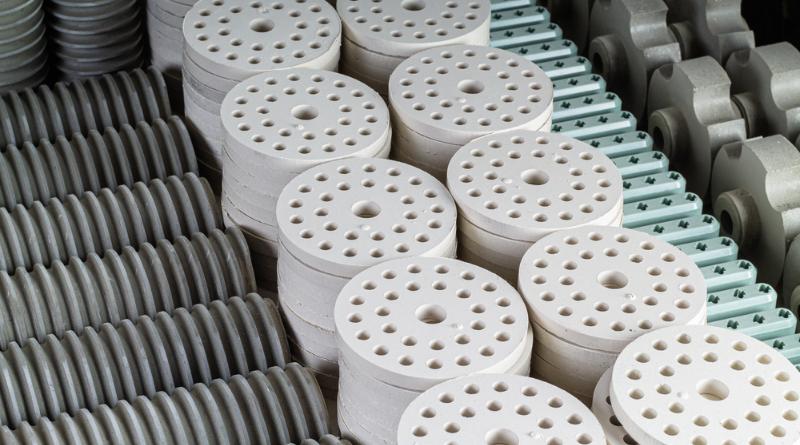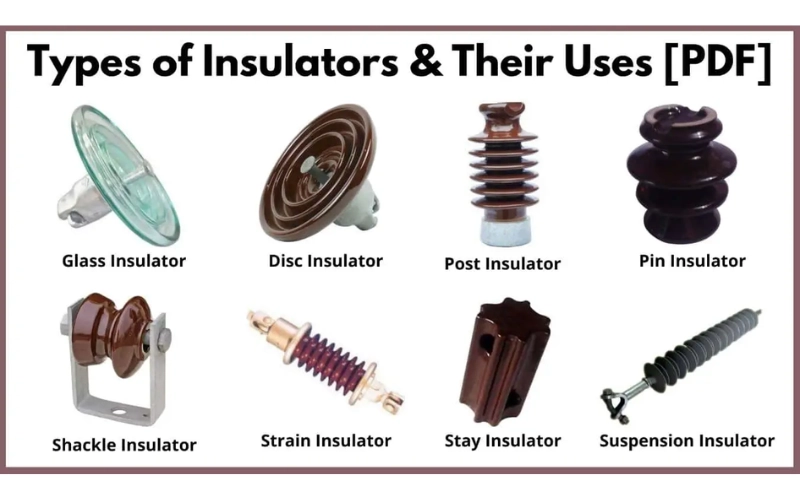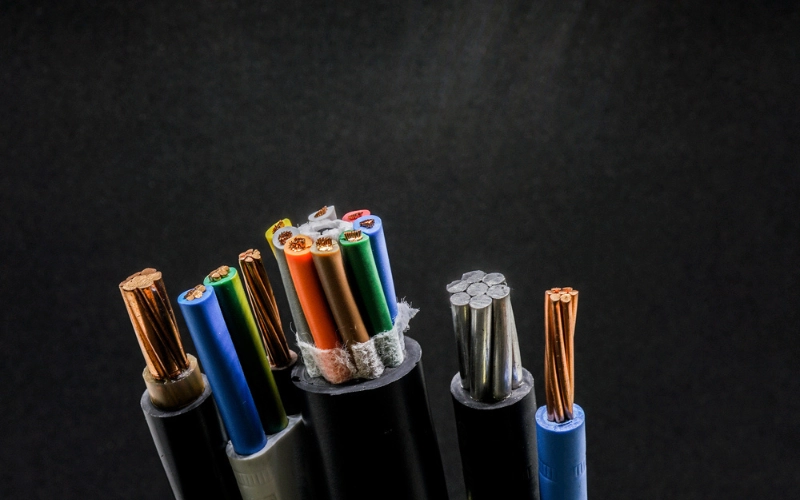
Characteristics
-
High dielectric strength.
-
It must withstand high temperatures.
-
Good thermal conductivity.
-
It must not be subjected to thermal oxidation.
-
Higher temperatures and repeated thermal cycling should not affect material properties.
-
The specific resistance must be high (around 1018 Ωcm).
-
Lower energy consumption.
-
Low dielectric loss angle.
-
It must withstand stresses caused by centrifugal forces, electrodynamic or mechanical forces.
-
It must resist vibration, abrasion and bending.
-
Do not absorb moisture.
-
It has to be flexible and cheap.
-
Liquid insulating agents must not evaporate or evaporate.
Properties and types of insulators

Solid
-
Fibrous or inorganic materials of animal or vegetable origin, natural or synthetic paper, wood, cardboard, cotton, jute, silk, viscose, nylon, asbestos, fiberglass, etc.
-
Plastic or resins. Natural resins – varnish, amber, shellac, etc.,
-
Synthetic resins – phenol-formaldehyde, melamine, polyester, epoxy, silicone resins, bakelite, Teflon, PVC, etc.
-
Rubber: Natural rubber, synthetic butadiene rubber, silicone rubber, Hypalon, etc.
-
Mineral: mica, marble, slate, talcum chloride, etc.
-
Ceramics: porcelain, soapstone, alumina, etc.
Glass:
-
Non-resinous: mineral waxes, asphalt, bitumen, chlorinated naphthalene, enamel, etc.
Fluid:
-
Mineral oil (petroleum by-product).
-
Askaris synthetic oil, Pyrazol etc.,
-
Varnishes, shellac polishes, epoxy resin varnishes, etc.
Gaseous:
-
Air used in switches, air condensers, transmission and distribution lines, etc.,
-
Although hydrogen is not used as a dielectric, it often serves as a coolant.
-
Use of nitrogen in capacitors, HV gas pressure cables, etc.
-
The noble gases neon, argon, mercury and sodium vapor are generally used for neon lamps.
-
Halogens, like fluorine, are used in cables under high pressure.
-
In practice, no insulating material meets all the desired properties. Therefore, a material that meets most of the desired properties must be selected.
The insulation system (also called insulation grade) for wires used in generators, motors, transformers, and other wound electrical components is divided into several categories depending on the temperature they can safely withstand. Maximum operating temperature is the temperature that the insulation will reach during operation. It is the sum of the standardized ambient temperature, i.e. 40 degrees Celsius, the allowable temperature rise and the tolerance for hot spots in the winding. For example, the maximum temperature of Class B insulation is (ambient temperature 40 + allowable temperature rise 80 + hot spot tolerance 10) = 130°C.
Features and types of stairs

Insulation is the weakest part against heat and can be crucial to the lifespan of electrical devices. Maximum operating temperatures specified for various insulation categories apply to a normal service life of 20,000 hours. The maximum permissible temperature for machine elements is sometimes a maximum of 2000 °C. Maximum operating temperature may affect insulation life. As a general rule, winding insulation life decreases by 0.5 for every 10°C increase in temperature. The current trend is to design the machine with Category F insulation for Category B temperature increases.
- Conductive materials for electrical machines
At the heart of every electrical machine is a network of conductive materials that allow the smooth flow of electrical energy. These carefully selected and engineered materials form the complex pathways through which electricity flows and powers our modern world. From generators to motors, transformers to power lines, conductive materials play a critical role in the performance and efficiency of these virtual devices. The search for ideal conductive materials is a tireless effort aimed at minimizing energy loss, maximizing energy transfer and ensuring reliable operation. In this exploration, we delve deeper into the field of conductive materials for electrical machines and discover the innovative advances, new alloys and composite structures that are reshaping the landscape of electrical conductivity. Join us on a fascinating journey into the world of conductive materials, where science and technology come together to unlock the true potential of electrical machines.
- Magnetic material for electrical machines
The fascinating power of magnetism is at the heart of countless electrical machines, determining their performance and defining their capabilities. The search for efficient and reliable magnetic materials is an ongoing effort, driven by the need to optimize power conversion, improve motor efficiency, and enable precise control of electromagnetic devices. From permanent magnets to soft magnetic materials, the selection and use of magnetic materials are essential to achieving the desired results. In this exploration, we delve deeper into magnetic materials for electrical machines and reveal the latest advancements, innovative compositions, and advanced manufacturing techniques that are revolutionizing the field. Join us as we explore magnetic materials, where science and engineering come together to unlock the true power of electrical machines and catapult us into a future of better performance, energy efficiency and transformative technologies.

